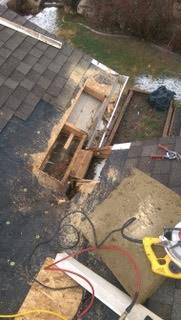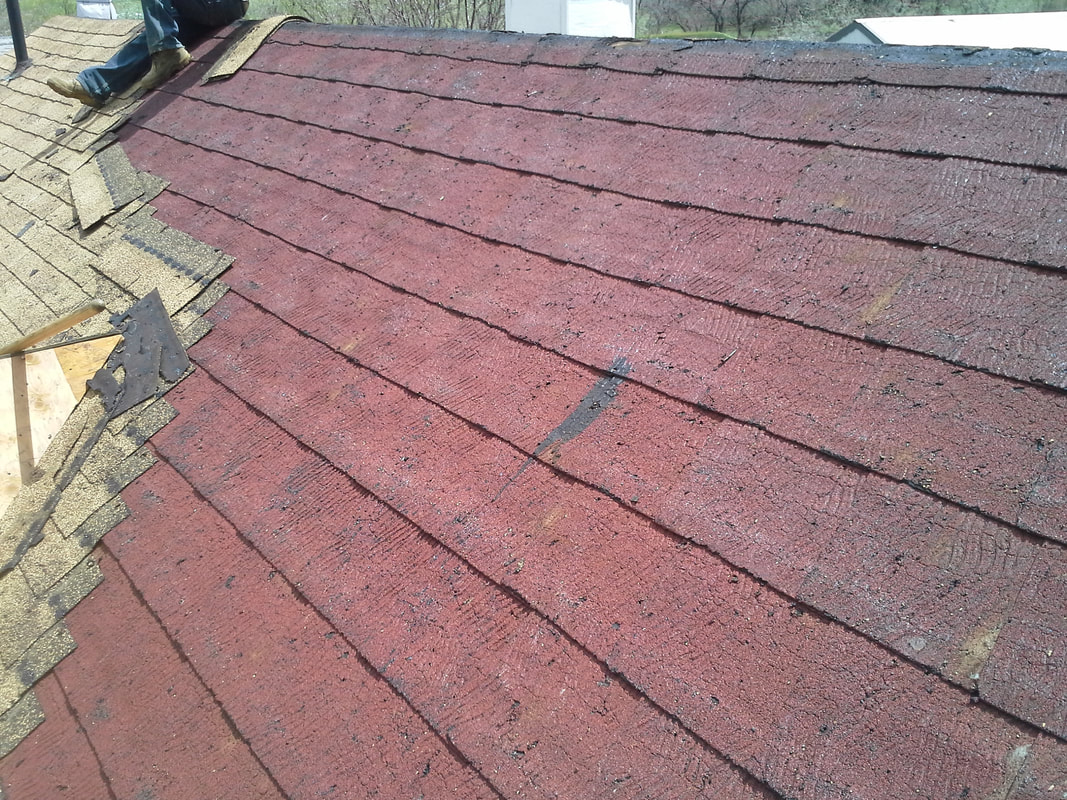| The wall to roof flashing is one of the most critical and overlooked part of a roof. A huge percentage of the roof problems we find are poorly installed flashings. The leak may not be noticeable right away but after time the leak will occur and create all sorts of nasty messes! | |
|
3 Comments
So just how many roof layers are allowed and when should a roof be torn off? That questions is asked by homeowners every day. At Casey Roofing Inc. we want to give the homeowner the information needed so they can make an informed decision.
The short answer is this: Utah building code allows only 2 roof layers on a home. A third layer is not allowed and the roof will need to be stripped down after 2 layers. We recommend tearing off the existing roof if there has ever been a history of leaking or if the first layer is in extremely poor condition. Covering up a problem will never result in the fixing of a problem. What roofs are good candidates for a re-roof. We only recommend roofs that are fairly smooth and have never had a history of leaking.  ...so whose fault is it? Most homeowners assume that if water is coming in, that their roof is leaking. A lot of the time, the roofers get blamed when a leak comes in to play. But, the problem may originate elsewhere. We have been on many roofs where the design is flawed and it causes problems in other aspects. Take this one for example: Here is a home that has a serious problem with water coming in and it has caused the plywood to rot at the bottom of the valley. The biggest problem is that the water was not getting off of the roof. The framers framed two valleys that intersected 2 feet from the edge of the roof. This created a 2 foot flat spot on a pitched roof that never should have been there. The architect should have never designed it that way. The framers never should have framed that way. And lastly, the roofers should have never roofed over an area that would be so problematic for the homeowner. So homeowners are left with the question, "Whose fault is it?" They all share responsibility in the blame. Contractors in any specific field should speak up and let the homeowner know of any impending problems. When building a home or remodeling, as you hire contractors, make sure that you communicate with them in every aspect from design to finished project. As a homeowner you have the right to be informed of any design flaws. In regards to your roof, ask questions, such as: "Can you see any areas that might cause problems in the case of ice build up or excessive rain/wind?" Ultimately, the roofers are the last to be on the roof. We, at Casey Roofing Inc. like to keep our clients informed as to what can be done to fix leaks and prevent and to prevent from ever happening in the first place. Casey Roofing Inc came in and fixed the problem. We cut out the damaged plywood, gave it some bracing and replaced the bad plywood. We then framed in a new piece of plywood thus moving the valley to the correct position. A little ice shield, TPO membrane and new shingles and the problem is fixed for good. Can you see what is wrong in this picture? It's the roof vent...it's broken. Recently a homeowner called and said they were getting a mystery leak. We crawled on the snowy roof to find not only that they had ice dams, but a broken power vent. Many home owners don’t realize that their power vents have plastic housings that are cracked and letting all sorts of weather into their home. If you think you have plastic vents call Casey Roofing Inc today to inspect your roof. Brittle and cracked plastic vents are a huge problem on your roof.
People are always surprised to find out we install roofs all year long. Although winter work is challenging and not ideal at times, sometimes the job just needs to get done. This home was being remodeled and having an addition put on in the back. We ended up having to remove snow the day we started the job. We removed 2 old roof layers, re-sheeted the entire original roof and put it all back together between snow storms. Even when the weather doesn't cooperate, we find a way around it!
Have you made the switch yet? Switching to Air Conditioning after having a swamp cooler is absolutely delightful! You'll find yourself wondering "why didn't we do this sooner?!" And then, "now, what are we going to do with the old swamp cooler on the roof?" There are some problems you might see if you leave your swamp cooler on your roof... Leaks may occur and cause water damage inside your home. During the winter months, there is a cold hole in your ceiling. Even though you can use a cooler pad to block the cold air from coming in, the pads don't completely seal and the cold air WILL come in. During summer months the heat from your roof may come in through the unused swamp cooler. Old swamp coolers are heavy and unsightly. There is no use in keeping them perched up on your rooftop. They can be removed. We do it all the time! Here is the process: We remove the old swamp cooler and fill in the hole with precision-cut plywood. We then install an ice and water shield as underlayment. And then finally, we match your existing shingles and install them to look as if there were never a hole there in the first place! And there you have it...see ya later swamp cooler! **If you're interested in brightening things up a bit in your home click here. We can take that old swamp cooler off of your house and bring natural light into your home by installing a solatube.
Tubular skylights can bring sunlight through your roof and attic and into your home. Install a light tube to save energy, reduce utility bills, and brighten up dark areas of your house.
We have installed many of these tubular skylights and we think they are pretty awesome! We even have a few in our own homes and we love the results!  This is a good reason why you need to hire people who really know and care about roofing products and procedures. We recently had to tear-off a complete (fairly new) roof that had extensive wind damage. The shingles were a great product and shouldn’t have blown off. The original installers didn’t know (or possibly, didn't care about) what they were doing. The shingles were improperly installed. The nails were nailed at the very top of the shingle instead of the middle area of the nail strip. And, to make matters worse, the nails were overdriven so badly because of overpressure on the compressor, that this roof never had a chance. How do you insure that this doesn't happen on your roof? A couple questions to ask: -Who will be installing the shingles? -What is their experience? -Are the nails the correct length for the shingle type? -Is speed/completion valued more so than quality? At Casey Roofing Inc, we (the owners) are on every job. Quality and pride in our workmanship are our first priority. If you have roofing needs, give us a call! Most people like the sound of rainstorms, streams, rivers or waterfalls. But with all of this rain, the last thing you want to hear is dripping water...in your living room! First things first, you must determine the underlying cause. Early detection of a leak is the key to avoiding serious costly damage. Finding the problem is sometimes the most difficult aspect of a roof repair. Leaks occur where there is wind damage, improper shingle installation, improper flashings, bad vent pipes, bad attic vents, and the list goes on and on. If a sudden rainstorm brings an unwanted surprise in your home, give us a call. We will come out and take a look.
Spring is here and we are back in full swing. It's a great time to start thinking about a new roof...or that repair that has been on the "to-do" list! Give us a call and we can get you quote.
|
Casey Roofing IncGreat Roofs, Great Prices. |









 RSS Feed
RSS Feed